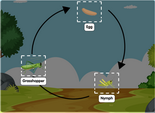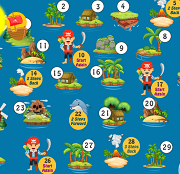Mangrove Science Facts Game
This game will help review key facts about mangrove swamps and their role in maintaining entire ecosystems.
Mangrove Protection
Mangroves are trees and shrubs that grow in tidal, mostly tropical, coastal swamps. They have many tangled roots which grow above the ground and create dense thickets. It is vital to protect mangrove forests. But what can you do? You can make a choice not to eat shrimp from mangrove forests, or donate money to local environmental groups, as well as raising awareness about local projects. Your carbon footprint can be reduced. You can help mangroves by living sustainably, recycling, and helping them to remain pristine. You can also help the mangroves plant trees. We've listed some ways that you can help the mangroves.
Red mangrove
Red mangroves and other tree species share a similar reproductive process. This is why they are so closely related. The seedlings of red mangroves are attached to their parents trees and germinate. When the seedlings are released to the sea, they can either take root with their parent trees or be carried to a suitable environment by the tides. This type of germination makes them more resistant to disease and natural disasters.
Red mangroves
Red mangroves are a unique plant in the plant kingdom. They are able to thrive in salt water, and have created an ecological niche for their own species. Their roots let oxygen reach their pores and filter out salt water. Their bark, leaves, and seeds can be used to make food and natural dyes. You can create many shades of red, brown, and olive from their bark, leaves, seeds, and leaves. The seeds and seedlings can also drift until they find the right place to grow.
Pneumatophores
Pneumatophores are special roots that mangrove plants have that extract oxygen from saltwater. These roots, which originate from the trunk of the mangrove trees, are long and thin. Because they have small pores, oxygen can diffuse into the root. Their large surface area allows for more oxygen to be absorbed. The process of pneumatophore formation is not yet understood. We will now discuss some possible mechanisms.
Cable roots
Taproots are common in terrestrial plants, but mangrove species rely more on cables roots. Tangled roots offer stability and oxygen access. The mangrove cable roots are shaped like pencils and have cone-shaped lobes called pneumatophores. These lobes act as snorkels in areas that are partially flooded. These roots also have lenticels that repel water. Continue reading to learn more about mangrove root!
Vivipary
Despite environmental stress, mangrove plants have vivipary that is genetically programmed. The offspring are very unlikely to disperse in both time and space.
Phytoplankton
Phytoplankton is the primary producer of mangrove estuaries, and they are essential for the productivity of the fishing industry. Phytoplankton is a major component of the marine food chain and are a primary source of food. They provide a significant portion of the nutrients found in the ocean for other organisms making them an essential part of the aquatic food web. These small organisms play an important role in the maintenance of biodiversity and the functioning of the marine food chain.
Algae
A variety of marine algae live in mangroves, and each one can be either beneficial or detrimental depending on its composition. The most common type of epiphytic algae is those that grow on sediments and tree roots. Their dense biomass blocks water from passing through the pneumatophores which allow oxygen to penetrate roots. The bark then falls off the roots, which is known as decertification. Vertical zonation of mangrove roots is caused by a single pneumatophore that runs from the upper to lower limits of the mangrove.
Shrimp farming
Shrimp farming in mangroves has many benefits. However, the negative effects of this activity far outweigh the economic and environmental benefits. Hamilton (2013) states that mangrove areas were lost in eight countries between 1980 and 2005. 51.9% of this area was converted to shrimp farming. The loss was significant if shrimp farming is assumed to be the primary culprit. Hamilton (2013) states that significant conversions have occurred in China and Indonesia as well as Bangladesh. The future of mangroves depends on whether these conversions have any positive effect.
Mud lobsters
It is not clear what the role of mud lobsters is in the restoration and maintenance of mangrove ecosystem. Wikipedia states that mud lobster meat is bland and not popular. However, this is not always true. The Fijians love mud lobsters. They are prepared in lime juice and mixed with chili, onions, tomatoes, coconut milk, and tomato sauce. They pose a serious ecological problem in areas that have prawn and fish farming. Their role in bioturbation must be considered when mangroves are restored.
Seabirds
The best place to spot seabirds is in large bays lined with mangrove trees. The most common seabird species are brown pelicans and neotropic cormorants, but you can also see laughing gulls, terns, and other species. These birds usually forage in the nearby waters for food and rest in trees along the shoreline. The presence of oil and environmental factors can often complicate their migration patterns.











